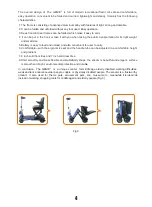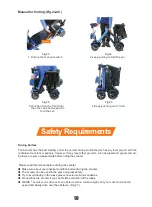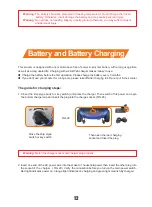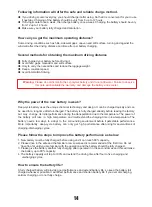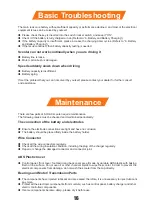
16
●
The components have injected lubricant and are sealed; therefore, it is unnecessary to inject lubricant
any more.
●
Protect all the electronic components from moisture, such as control panel, battery charger and other
electric controlled components.
●
If some components become damp, please dry it before use.
Bearings and Motor/ Transmission Parts
●
Control panel, front cover, footboard and back cover are all made by durable ABS plastic with baking
finish on the surface. Do not use oil or other chemical liquids to wipe the scooter. In order to prevent the
electrical components from damage, do not wash the scooter from the tap directly.
ABS Plastic Cover
●
Check all the wire connectors regularly.
●
Check all the wiring insulation condition, including the plug of the charger regularly.
●
Repair or change the damaged connector and connector joint.
Wire Connector
●
Ensure the electrode connections are tight and have no corrosion.
●
The battery should be placed flatly inside the battery holder.
The connection of the battery and electrodes
There are few parts of SOLAX scooter require maintenance.
The following issues must be checked and maintained periodically:
If met the problem that you can not solve it by yourself, please contact your dealer for further consult
and assistance.
●
Battery capacity is insufficient.
●
Battery aging.
Speed suddenly slows down when driving
●
Battery line is loose.
●
Motor carton bush is damaged.
Scooter can not work continually when you are driving it
●
Please check the key is inserted into the switch /rocker switch, and keep it “ON”.
●
Check it if the battery is fully charged or not. (Refers to “6. Battery and Battery Charging”)
●
If the battery capacity is insufficient, please increase the charging time/ cycles. (Refers to “6. Battery
and Battery Charging”)
●
If the issue continued, then battery capacity testing is needed.
The main reason is battery without sufficient capacity or performance declined, and most of the electrical
equipment issue can be solved by yourself.
Maintenance
Basic Troubleshooting



